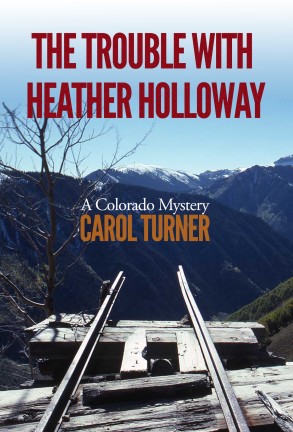This article first appeared in the Broomfield Enterprise (May 20, 2007).
Back in 1849, a wagon train came through the front range of Colorado, which was then described as a “howling wilderness,” sparsely populated by the Arapaho and Cheyenne. In a collaboration that must have been unusual, the wagon train consisted of members of the Cherokee Nation and white pioneers. All were heading ultimately for the gold fields of California. The trail they took along the Colorado Front Range became known as the Cherokee Trail (not to be confused with the infamous Cherokee Trail of Tears.)
Starting at Bent’s Fort in southeastern Colorado (near today’s La Junta) , the Cherokee Trail headed west to Pueblo, north into Laramie, Wyoming, and west again to rendezvous with the Oregon Trail at Fort Bridger on the Green River. At that time, the area that would become Denver was an Arapaho camp of up to 1,500 people.
In 1850, as many as four more wagon trains of Cherokees and whites entered the area using the same trail. Just north of Denver, some of these groups took a more westerly route, rejoining the original trail near Fort Collins. At what is now Broomfield, this western branch of the Cherokee Trail followed roughly the same route as today’s Highway 287.

Wagons used in frontier day wagon train now on display at the Bird Cage museum in Tombstone, Arizona. Library of Congress.
Over the next few years, traffic on the Cherokee Trail consisted mostly of prospectors on their way to California. That changed in 1858 when William Russell discovered gold in Colorado. The discovery started what is collectively known as the Pikes Peak Gold Rush, which brought 100,000 people to Colorado in a space of three years. A chunk of those prospectors came to the area north of Denver. A member of one of the 1850 wagon trains, Lewis Ralston, had found a bit of gold on a small tributary of today’s Clear Creek. (The tributary is now called Ralston Creek.) Several of the Cherokees from that original 1850 party returned from California and found a generous placer deposit on the South Platte.
Someone needed to feed all those hungry prospectors and food prices were high so there was good money to be made. Farmers and ranchers moved in, raising potatoes, corn, pumpkins, squash, and wheat, along with cattle and horses.
The Cherokee Trail soon became the main stage route between Denver and Salt Lake City and the name morphed into the Cherokee/Overland Trail. A number of illustrious people passed through today’s Broomfield over the Trail, including future President Ulysses S. Grant, future Vice President Schuyler Colfax, Civil War Generals William T. Sherman and Philip H. Sheridan, New York Tribune editor Horace Greeley, and, last and arguably least, Billy the Kid.
But, as things seemed to go in the West, the Cherokee Trail’s heyday was short-lived. Within 20 years, the railroads took over from the stagecoach and the only people trundling along the Cherokee Trail were those who had settled in to stay.
![]()
 Check out my novel, THE TROUBLE WITH HEATHER HOLLOWAY, available on amazon kindle or on any device using the amazon kindle app.
Check out my novel, THE TROUBLE WITH HEATHER HOLLOWAY, available on amazon kindle or on any device using the amazon kindle app.
Her first week on the job, and Marshal Beth Mayo is hit with a sex assault case. It’s a nasty shock for the bucolic mountain town of Sugarloaf and for Mayo, who is still recovering from her husband’s death. Her initial skepticism grows into disbelief over the victim’s zany story, and she dismisses the case as a false report. Unfortunately, the same woman is soon discovered in the ruins of a ghost town, most definitely murdered.
Mayo unravels the complex case through a parade of colorful suspects and misfit family members, all the while following a common thread from 150 years earlier — Colorado history’s most notorious event, the Sand Creek Massacre.


Some of your readers may not know that the Cherokee intermarried with whites more than any other tribe, Carol, particularly Scots and Irish. Their ancestral home was in Georgia, where they developed a written alphabet, a government, and a westernized community that negotiated with Washington. It all came to naught, however, when whites discovered gold in Georgia.
Thanks for this story, which I will share with my brothers.
Mary
Hi Mary, The Cherokee are a particularly fascinating tribe. And tragic.